Mathematics and architecture
From Wikipedia, the free encyclopedia
Mathematics and architecture are related, since, as with other arts, architects use mathematics for several reasons. Apart from the mathematics needed when engineering buildings, architects use geometry: to define spatial forms; from the Pythagoreans onwards, to create forms considered harmonious, and thus to lay outbuildings and their surroundings according to mathematical, aesthetic and sometimes religious principles; to decorate buildings with mathematical objects such astessellations; and to meet environmental goals, such as to minimise wind speeds around the bases of tall buildings.
In ancient Egypt, ancient Greece, India, and the Islamic world buildings including pyramids, temples, mosques, palaces and mausoleums were laid out with specific proportions for religious reasons. In Islamic architecture, geometric shapes and geometric tiling patterns are used to decorate buildings, both inside and outside. Some Hindu temples have a fractal-like structure where parts resemble the whole, conveying a message about Hindu cosmology. In the 21st century, mathematical ornamentation is again being used to cover public buildings.
In Renaissance architecture, symmetry and proportion were deliberately emphasized by secular architects such as Leon Battista Alberti, Sebastiano Serlio andAndrea Palladio, influenced by Vitruvius's De architectura from Ancient Rome and the arithmetic of the Pythagoreans from Ancient Greece. At the end of the nineteenth century, Vladimir Shukhov in Russia and Antoni Gaudí in Barcelona pioneered the use of hyperboloid structures; in the Sagrada Família, Gaudí also incorporated hyperbolic paraboloids, tessellations, catenary arches, catenoids, helicoids, and ruled surfaces. In the twentieth century, styles such as modern architecture and Deconstructivism explored different geometries to achieve desired effects. Minimal surfaces have been exploited in tent-like roof coverings as atDenver International Airport, while Richard Buckminster Fuller pioneered the use of the strong thin-shell structures known as geodesic domes.
Contents
[hide]Connected fields[edit]
Michael Ostwald and Kim Williams, considering the relationships between architecture and mathematics, note that the fields as commonly understood might seem to be only weakly connected, architecture being a profession concerned with the practical matter of making buildings, mathematics being the pure study of number and other abstract objects. But, they argue, the two are strongly connected, and have been since antiquity. In ancient Rome, Vitruvius described an architect as a man who knew enough of a range of other disciplines, primarily geometry, to enable him to oversee skilled artisans in all the other necessary areas, such as masons and carpenters. The same applied in theMiddle Ages, where graduates learnt arithmetic, geometry and aesthetics alongside the basic syllabus of grammar, logic, and rhetoric (the trivium) in elegant halls made by master builders who had guided many craftsmen. A master builder at the top of his profession was given the title of architect or engineer. In the Renaissance, the extra syllabus became thequadrivium of arithmetic, geometry, music and astronomy, studies expected of the Renaissance man such as Leon Battista Alberti. Similarly in England, Sir Christopher Wren, known today as an architect, was firstly a noted astronomer.[2]
Williams and Ostwald, further overviewing the interaction of mathematics and architecture since 1500 according to the approach of the German sociologist Theodor Adorno, identify three tendencies among architects, namely to be revolutionary, introducing wholly new ideas; reactionary, failing to introduce change; or revivalist, actually going backwards. They argue that architects have avoided looking to mathematics for inspiration in revivalist times. This would explain why in revivalist periods, such as the Gothic Revival in 19th century England, architecture had little connection to mathematics. Equally, they note that in reactionary times such as the Italian Mannerism of about 1520 to 1580, or the 17th centuryBaroque and Palladian movements, mathematics was barely consulted. In contrast, the revolutionary early 20th century movements such as Futurism and Constructivism actively rejected old ideas, embracing mathematics and leading to Modernist architecture. Towards the end of the 20th century, too, fractal geometry was quickly seized upon by architects, as was aperiodic tiling, to provide interesting and attractive coverings for buildings.[3]
Architects use mathematics for several reasons, leaving aside the necessary use of mathematics in the engineering of buildings.[4] Firstly, they use geometry because it defines spatial forms.[5] Secondly, they use mathematics to design forms that are considered beautiful or harmonious.[6] From the time of the Pythagoreans with their religious philosophy of number,[7] architects in Ancient Greece, Ancient Rome, the Islamic world and the Italian Renaissance have chosen the proportions of the built environment – buildings and their designed surroundings – according to mathematical as well as aesthetic and sometimes religious principles.[8][9][10][11] Thirdly, they may use mathematical objects such as tessellationsto decorate buildings.[12][13] Fourthly, they may use mathematics in the form of computer modelling to meet environmental goals, such as to minimise whirling air currents at the base of tall buildings.[14]
Harmonious spatial forms[edit]
Secular aesthetics[edit]
Ancient Rome[edit]
Vitruvius[edit]
The influential Ancient Roman architect Vitruvius argued that the design of a building such as a temple depended on two qualities,symmetria and proportion. Proportion ensures that each part of a building relates harmoniously to every other part. Symmetria in Vitruvius's usage means something closer to the English term modularity than mirror symmetry, as again it relates to the assembling of (modular) parts into the whole building. In his Basilica at Fano, he uses ratios of small integers, especially the triangular numbers(1, 3, 6, 10, ...) to proportion the structure into (Vitruvian) modules.[a] Thus the Basilica's width to length is 1:2; the aisle around it is as high as it is wide, 1:1; the columns are five feet thick and fifty feet high, 1:10.[8]
Vitruvius named three qualities required of architecture in his De architectura, c. 15 B.C.: firmness, usefulness (or "Commodity" inHenry Wotton's 16th century English), and delight. These can be used as categories for classifying the ways in which mathematics is used in architecture. Firmness encompasses the use of mathematics to ensure a building stands up, hence the mathematical tools used in design and to support construction, for instance to ensure stability and to model performance. Usefulness derives in part from the effective application of mathematics, reasoning about and analysing the spatial and other relationships in a design. Delight is an attribute of the resulting building, resulting from the embodying of mathematical relationships in the building; it includes aesthetic, sensual and intellectual qualities.[16]
The Pantheon[edit]
Main article: Pantheon (Rome)
The Pantheon in Rome has survived intact, illustrating classical Roman structure, proportion, and decoration. The main structure is a dome, the apex left open as a circular oculus to let in light; it is fronted by a short colonnade with a triangular pediment. The height to the oculus and the diameter of the interior circle are the same, 43.3 metres (142 ft), so the whole interior would fit exactly within a cube, and the interior could house a sphere of the same diameter.[17] These dimensions make more sense when expressed in ancient Roman units of measurement: The dome spans 150 Roman feet; the oculus is 30 Roman feet in diameter; the doorway is 40 Roman feet high.[18] The Pantheon remains the world's largest unreinforced concrete dome.[19]
Renaissance[edit]
Further information: Renaissance architecture
The first Renaissance treatise on architecture was Leon Battista Alberti's 1450 De re aedificatoria (On the Art of Building); it became the first printed book on architecture in 1485. It was partly based on Vitruvius's De architectura and, via Nicomachus, Pythagorean arithmetic. Alberti starts with a cube, and derives ratios from it. Thus the diagonal of a face gives the ratio 1:√2, while the diameter of the sphere which circumscribes the cube gives 1:√3.[20][21] Alberti also documented Filippo Brunelleschi's discovery of linear perspective, developed to enable the design of buildings which would look beautifully proportioned when viewed from a convenient distance.[11]
The next major text was Sebastiano Serlio's Regole generali d'architettura (General Rules of Architecture); the first volume appeared in Venice in 1537; the 1545 volume (books 1 and 2) covered geometry and perspective. Two of Serlio's methods for constructing perspectives were wrong, but this did not stop his work being widely used.[23]
In 1570, Andrea Palladio published the influential I quattro libri dell'architettura (The Four Books of Architecture) in Venice. This widely printed book was largely responsible for spreading the ideas of the Italian Renaissance throughout Europe, assisted by proponents like the English diplomat Henry Wotton with his 1624 The Elements of Architecture.[24] The proportions of each room within the villa were calculated on simple mathematical ratios like 3:4 and 4:5, and the different rooms within the house were interrelated by these ratios. Earlier architects had used these formulas for balancing a single symmetrical facade; however, Palladio's designs related to the whole, usually square, villa.[25] Palladio permitted a range of ratios in the Quattro libri, stating:[26]
In 1615, Vincenzo Scamozzi published the late Renaissance treatise L'Idea dell'Architettura Universale (The Idea of a Universal Architecture).[28] He attempted to relate the design of cities and buildings to the ideas of Vitruvius and the Pythagoreans, and to the more recent ideas of Palladio.[29]
Nineteenth century[edit]
Hyperboloid structures were used starting towards the end of the nineteenth century by Vladimir Shukhov for masts, lighthouses and cooling towers. Their striking shape is both aesthetically interesting and strong, using structural materials economically. Shukhov's first hyperboloidal tower was exhibited in Nizhny Novgorod in 1896.[30][31][32]
Twentieth century[edit]
Further information: Modern architecture and Contemporary architecture
The early twentieth century movement Modern Architecture used rectilinear Euclidean (also called Cartesian) geometry. In the De Stijl movement, the horizontal and the vertical were seen as constituting the universal. The architectural form consists of putting these two directional tendencies together, using roof planes, wall planes and balconies, which either slide past or intersect each other, as in the 1924 Rietveld Schröder House by Gerrit Rietveld.[33]
Modernist architects were free to make use of curves as well as planes. Charles Holden's 1933 Arnos station has a circular ticket hall in brick with a flat concrete roof.[34]
Le Corbusier proposed an anthropometric scale of proportions in architecture, the Modulor, based on the supposed height of a man.[35] Le Corbusier's 1955 Chapelle Notre Dame du Haut uses free-form curves not describable in mathematical formulae.[c] The shapes are said to be evocative of natural forms such as the prow of a ship or praying hands.[38] The design is only at the largest scale: there is no hierarchy of detail at smaller scales, and thus no fractal dimension; the same applies to other famous twentieth-century buildings such as the Sydney Opera House, Denver International Airport, and the Guggenheim Museum, Bilbao.[36]
Contemporary architecture, in the opinion of leading architects themselves in a 2010 World Architecture Survey, is extremely diverse; the best was judged to be Frank Gehry's Guggenheim Museum, Bilbao.[39]
Denver International Airport's terminal building, completed in 1995, has a fabric roof supported as a minimal surface (i.e., its mean curvature is zero) by steel cables. It evokes Colorado's snow-capped mountains and the teepee tents of Native Americans.[40][41]
The architect Richard Buckminster Fuller is famous for designing strong thin-shell structures known as geodesic domes. The Montréal Biosphère dome is 61 metres high; its diameter is 76 metres.[42]
Sydney Opera House has a dramatic roof consisting of soaring white vaults, reminiscent of ship's sails; to make them possible to construct using standardized components, the vaults are all composed of triangular sections of spherical shells. These have the required uniform curvature in every direction.[43]
The late twentieth century movement Deconstructivism creates deliberate disorder with what Nikos Salingaros in A Theory of Architecture calls random forms[44] of high complexity[45] by using non-parallel walls, superimposed grids and complex 2-D surfaces, as in Frank Gehry's Disney Concert Hall and Guggenheim Museum, Bilbao.[46][47] Until the twentieth century, architecture students were obliged to have a grounding in mathematics. Salingaros argues that first "overly simplistic, politically-driven" Modernism and then "anti-scientific" Deconstructivism have effectively separated architecture from mathematics. He believes that this "reversal of mathematical values" is harmful, as the "pervasive aesthetic" of non-mathematical architecture trains people "to reject mathematical information in the built environment"; he argues that this has negative effects on society.[36]
Religious principles[edit]
Ancient Egypt[edit]
Further information: Ancient Egyptian funerary practices
The pyramids of ancient Egypt are tombs constructed with deliberately chosen proportions, but which these were has been debated. The ratio of the slant height to half the base length is 1.619, less than 1% from the golden ratio. If this was the design method, it would imply the use of Kepler's triangle (face angle 51°49’).[48][49] However it is more likely that pyramids were made with the 3-4-5 triangle(face angle 53°8’), known from the Rhind Mathematical Papyrus (c. 1650 – 1550 BC); or with the triangle with base to hypotenuse ratio 1:4/π (face angle 51°50’).[50]
Ancient India[edit]
Further information: Vaastu Shastra
Vaastu Shastra, the ancient Indian canons of architecture and town planning, employ symmetrical drawings called mandalas. Complex calculations are used to arrive at the dimensions of a building and its components. The designs are intended to integrate architecture with nature, the relative functions of various parts of the structure, and ancient beliefs utilizing geometric patterns (yantra), symmetry and directional alignments.[51][52] However, early builders may have come upon mathematical proportions by accident. Georges Ifrah notes that simple "tricks" with string and stakes can be used to lay out geometric shapes, such as ellipses and right angles.[11][53]
The mathematics of fractals has been used to show that the reason why existing buildings have universal appeal and are visually satisfying is because they provide the viewer with a sense of scale at different viewing distances. For example, in Hindu temples such as the Virupaksha Temple at Hampi(from 7th century onwards) and others such as the Kandariya Mahadev Temple at Khajuraho, the parts and the whole have the same character, withfractal dimension in the range 1.7 to 1.8. The cluster of smaller towers (shikhara, lit. 'mountain') about the tallest, central, tower which represents the holy Mount Kailash, dwelling-place of Lord Shiva, depicts the endless repetition of universes in Hindu cosmology.[1][54] William J. Jackson observed of the pattern of towers grouped among smaller towers, themselves grouped among still smaller towers, that:
The Meenakshi Amman Temple is a large complex with multiple shrines, with the streets of Madurai laid out concentrically around it according to the shastras. The four gateways are tall towers (gopurams) with fractal-like repetitive structure as at Hampi. The enclosures around each shrine are rectangular and surrounded by high stone walls.[56]
Ancient Greece[edit]
Pythagoras (c. 569 – c. 475 B.C.) and his followers, the Pythagoreans, held that "all things are numbers". They observed the harmonies produced by notes with specific small-integer ratios of frequency, and argued that buildings too should be designed with such ratios. The Greek word symmetria originally denoted the harmony of architectural shapes in precise ratios from a building's smallest details right up to its entire design.[11]
The Parthenon is 69.5 m long, 30.9 m wide and 13.7 m high to the cornice. This gives a ratio of width to length of 4:9, and the same for height to width. Putting these together gives height:width:length of 16:36:81, or to the pleasure of the Pythagoreans 42:62:92. This sets the module as 0.858 m. A 4:9 rectangle can be constructed as three contiguous rectangles with sides in the ratio 3:4. Each half-rectangle is then a convenient 3:4:5 right triangle, enabling the angles and sides to be checked with a suitably knotted rope. The inner area (naos) similarly has 4:9 proportions (21.44 m wide by 48.3 m long); the ratio between the diameter of the outer columns, 1.905 m, and the spacing of their centres, 4.293 m, is also 4:9.[11]
The Parthenon is considered "the most perfect Doric temple ever built".[57] Its elaborate architectural refinements include "a subtle correspondence between the curvature of the stylobate, the taper of the naos walls and the entasis of the columns".[57] Entasis refers to the subtle diminution in diameter of the columns as they rise. The stylobate is the platform on which the columns stand. As in other classical Greek temples,[58] the platform has a slight parabolic upward curvature to shed rainwater and reinforce the building against earthquakes. The columns might therefore be supposed to lean outwards, but they actually lean slightly inwards so that if they carried on, they would meet about a mile above the centre of the building; since they are all the same height, the curvature of the outer stylobate edge is transmitted to the architrave and roof above: "all follow the rule of being built to delicate curves"[59]
The golden ratio was known in 300 B.C., when Euclid described the method of geometric construction.[60] It has been argued that the golden ratio was used in the design of the Parthenon and other ancient Greek buildings, as well as sculptures, paintings, and vases.[61] More recent authors, however, doubt all these claims.[62] Experiments by George Markowsky failed to find any preference for the golden rectangle.[63]
Islamic architecture[edit]
Main articles: Islamic architecture and Alhambra
Antonio Fernandez-Puertas suggests that the Alhambra, like the Great Mosque of Cordoba,[64] was designed using the Hispano-Muslim foot or codo of about 62 cm. In the palace's Court of the Lions, the proportions follow a series of surds. A rectangle with sides 1 and √2 has (by Pythagoras theorem) a diagonal of √3, which describes the right triangle made by the sides of the court; the series continues with √4 (giving a 1:2 ratio), √5 and so on. The decorative patterns are similarly proportioned, √2 generating squares inside circles and eight-pointed stars, √3 generating six-pointed stars. There is no evidence to support earlier claims that the golden ratio was used in the Alhambra.[9][65] The Court of the Lions is bracketed by the Hall of Two Sisters and the Hall of the Abencerrajes; a regular hexagon can be drawn from the centres of these two halls and the four inside corners of the Court of the Lions.[66]
Mughal architecture[edit]
Mughal architecture, as seen in the abandoned imperial city of Fatehpur Sikri and the Taj Mahal complex, has a distinctive mathematical order and a strong aesthetic based on symmetry and harmony.[10][67]
The Taj Mahal exemplifies Mughal architecture, both representing paradise and displaying the Mughal Emperor Shah Jahan's power through its scale, symmetry and costly decoration. The white marble mausoleum, decorated with pietra dura, together with the great gate (Darwaza-i rauza), other buildings, the gardens and paths together form a unified hierarchical design. The buildings include a mosque in red sandstone on the west, and an almost identical building, the Jawab or 'answer' on the east to maintain the bilateral symmetry of the complex. The formal charbagh ('fourfold garden') gardens are in four parts, symbolising the four rivers of paradise, and offering views and reflections of the mausoleum. They are divided in turn into 16 parterres.[68]
The Taj Mahal complex was laid out on a grid, subdivided into smaller grids. Koch and Barraud, analysing these in 2006, agree with the traditional accounts that give the width of the complex as 374 Mughal yards or gaz,[d] the main area being three 374-gaz squares. These were divided in areas like the bazaar and caravanserai into 17-gaz modules; the garden and terraces are in modules of 23 gaz, and are 368 gaz wide (16 x 23). The mausoleum, mosque and guest house are laid out on a grid of 7 gaz. Koch and Barraud observe that if an octagon, used repeatedly in the complex, is given sides of 7 units, then it has a width of 17 units, which may help to explain the choice of ratios in the complex.[69]
Christian architecture[edit]
Further information: Church architecture
Antoni Gaudí used a wide variety of geometric structures, some being minimal surfaces, in the Sagrada Família,Barcelona, started in 1882 (and not completed as of 2015). These include hyperbolic paraboloids and hyperboloids of revolution,[70] tessellations, catenary arches, catenoids, helicoids, and ruled surfaces. This varied mix of geometries is creatively combined in different ways around the church. For example, in the Passion Façade of Sagrada Família, Gaudí assembled stone "branches" in the form of hyperbolic paraboloids, which overlap at their tops (directrices) without, therefore, meeting at a point. In contrast, in the colonnade there are hyperbolic paraboloidal surfaces that smoothly join other structures to form unbounded surfaces. Further, Gaudí exploits natural patterns, themselves mathematical, with columns derived from the shapes of trees, and lintels made from unmodified basalt naturally cracked (by cooling from molten rock) into hexagonal columns.[71][72][73]
The 1971 Cathedral of Saint Mary of the Assumption, San Francisco has a saddle roof composed of eight segments of hyperbolic paraboloids, arranged so that the bottom horizontal cross section of the roof is a square and the top cross section is a Christian cross. The building is a square 255 feet (77.7 m) on a side, and 190 feet (57.9 m) high.[74]
Mathematical decoration[edit]
Islamic architectural decoration[edit]
Main article: Islamic geometric patterns
Islamic buildings are often decorated with geometric patterns which typically make use of several mathematical tessellations, formed of ceramic tiles (girih, zellige) that may themselves be plain or decorated with stripes.[11] Symmetries such as stars with six, eight, or multiples of eight points are used in Islamic patterns. Some of these are based on the 'Khatem Sulemani' or Solomon's seal motif, which is an eight-pointed star made of two squares, one rotated 45 degrees from the other on the same centre.[75] Islamic patterns exploit many of the 17 possible wallpaper groups; as early as 1944, Edith Müller showed that the Alhambra made use of 11 wallpaper groups in its decorations, while in 1986 Branko Grünbaum claimed to have found 13 wallpaper groups in the Alhambra, asserting controversially that the remaining 4 groups are not found anywhere in Islamic ornament.[75]
Modern architectural decoration[edit]
Further information: Ornament (art)
Towards the end of the 20th century, novel mathematical constructs such as fractal geometry and aperiodic tiling were seized upon by architects to provide interesting and attractive coverings for buildings.[3] In 1913, the Modernist architect Adolf Loos had declared that "Ornament is a crime",[76] influencing architectural thinking for the rest of the century. In the 21st century, architects are again starting to explore the use of ornament. 21st century ornamentation is extremely diverse. Henning Larsen's 2011 Harpa Concert and Conference Centre, Reykjavik has what looks like a crystal wall of rock made of large blocks of glass. Foreign Office Architects' 2010 Ravensbourne College, London is tessellated decoratively with 28,000 anodised aluminium tiles in red, white and brown, interlinking circular windows of differing sizes. The tessellation uses three types of tile, an equilateral triangle and two irregular pentagons.[77][78][e] Kazumi Kudo's Kanazawa Umimirai Library creates a decorative grid made of small circular blocks of glass.[76]
Environmental goals[edit]
Architects may also select the form of a building to meet environmental goals. For example, Foster and Partners' 30 St Mary Axe, London, known as "The Gherkin" for itscucumber-like shape, is a solid of revolution designed using parametric modelling. Its geometry was chosen not purely for aesthetic reasons, but to minimise whirling air currents at its base. Despite the building's apparently curved surface, all the panels of glass forming its skin are flat, except for the lens at the top. Most of the panels arequadrilaterals, as they can be cut from rectangular glass with less wastage than triangular panels.[14]
See also[edit]
Notes[edit]
- ^ In Book 4, chapter 3 of De architectura, he discusses modules directly.[15]
- ^ In modern algebraic notation, these ratios are respectively 1:1, √2:1, 4:3, 3:2, 5:3, 2:1.
- ^ Pace Nikos Salingaros, who suggests the contrary,[36] but it is not clear exactly what mathematics may be embodied in the curves of Le Corbusier's chapel.[37]
- ^ 1 gaz is about 86 cm.
- ^ An aperiodic tiling was considered, to avoid the rhythm of a structural grid, but in practice a Penrose tiling was too complex, so a grid of 2.625m horizontally and 4.55m vertically was chosen.[78]
References[edit]
- ^ a b Rian, Iasef Md; Park, Jin-Ho; Ahn, Hyung Uk; Chang, Dongkuk (2007). "Fractal geometry as the synthesis of Hindu cosmology in Kandariya Mahadev temple, Khajuraho". Building and Environment42: 4093–4107.
- ^ Williams, Kim; Ostwald, Michael J., ed. (2015). Architecture and Mathematics from Antiquity to the Future: Volume I: from Antiquity to the 1500s. Birkhäuser. pp. chapter 1. 1–24. ISBN 978-3-319-00136-4.
- ^ a b Williams, Kim; Ostwald, Michael J., ed. (2015). Architecture and Mathematics from Antiquity to the Future: Volume II: The 1500s to the Future. Birkhäuser. pp. chapter 48. 1–24. ISBN 978-3-319-00142-5.
- ^ "Architectural Engineering Overview" (PDF). Sloan Career Cornerstone Center. Retrieved 11 October 2015.
- ^ Leyton, Michael (2001). A Generative Theory of Shape. Springer.ISBN 978-3-540-42717-9.
- ^ Stakhov, Alexey; Olsen, Olsen (2009). The Mathematics of Harmony: From Euclid to Contemporary Mathematics and Computer Science. World Scientific. ISBN 978-981-277-582-5.
- ^ Smith, William (1870). Dictionary of Greek and Roman Biography and Mythology. Little, Brown. p. 620.
- ^ a b Vitruvius (2009). On Architecture. Penguin Books. pp. 8–9.ISBN 978-0-14-193195-1.
- ^ a b Tennant, Raymond (July 2003). "International Joint Conference of ISAMA, the International Society of the Arts, Mathematics, and Architecture, and BRIDGES, Mathematical Connections in Art Music, and Science, University of Granada, Spain, July, 2003 459 Islamic Constructions: The Geometry Needed by Craftsmen" (PDF).International Joint Conference of ISAMA, the International Society of the Arts, Mathematics, and Architecture, and BRIDGES, Mathematical Connections in Art Music, and Science.
- ^ a b Rai, Jaswant (1993). "Mathematics and Aesthetics in Islamic Architecture: Reference to Fatehpur Sikri". Journal of King Saud University, Architecture & Planning 5 (1): 19–48.
- ^ a b c d e f O'Connor, J. J.; Robertson, E. F. (February 2002)."Mathematics and Architecture". University of St Andrews. Retrieved4 October 2015.
- ^ van den Hoeven, Saskia; van der Veen, Maartje (2010). "Muqarnas: Mathematics in Islamic Arts" (PDF). Utrecht University. Retrieved30 September 2015.
- ^ Cucker, Felix (2013). Manifold Mirrors: The Crossing Paths of the Arts and Mathematics. Cambridge University Press. pp. 103–106.ISBN 978-0-521-72876-8.
- ^ a b Freiberger, Marianne (1 March 2007). "Perfect buildings: the maths of modern architecture". Plus magazine. Retrieved 5 October2015.
- ^ Vitruvius. "VITRUVIUS, BOOK IV, CHAPTER 3 On the Doric order". Vitruvius.be. Retrieved 6 October 2015.
- ^ Williams, Kim; Ostwald, Michael J. (9 February 2015). Architecture and Mathematics from Antiquity to the Future: Volume I: Antiquity to the 1500s. Birkhäuser. pp. 42, 48. ISBN 978-3-319-00137-1.
- ^ Roth, Leland M. (1992). Understanding Architecture: Its Elements, History, And Meaning. Boulder: Westview Press. p. 36. ISBN 0-06-438493-4.
- ^ Claridge, Amanda (1998). Rome. Oxford Archaeological Guides. Oxford Oxfordshire: Oxford University Press. pp. 204–5. ISBN 0-19-288003-9.
- ^ Lancaster, Lynne C. (2005). Concrete Vaulted Construction in Imperial Rome: Innovations in Context. Cambridge: Cambridge University Press. pp. 44–46. ISBN 0-521-84202-6.
- ^ March, Lionel (1996). "Renaissance mathematics and architectural proportion in Alberti's De re aedificatoria". Architectural Research Quarterly 2 (1): 54–65. doi:10.1017/S135913550000110X.
- ^ "Sphere circumscribing a cube". Mathalino.com Engineering Math Review. Retrieved 4 October 2015.
- ^ Typ 525.69.781, Houghton Library, Harvard University
- ^ Andersen, Kirsti (2008). The Geometry of an Art: The History of the Mathematical Theory of Perspective from Alberti to Monge. Springer. pp. 117–121. ISBN 978-0-387-48946-9.
- ^ Ruhl, Carsten (7 April 2011). "Palladianism: From the Italian Villa to International Architecture". European History Online. Retrieved3 October 2015.
- ^ Copplestone, Trewin (1963). World Architecture. Hamlyn. p. 251.
- ^ Wassell, Stephen R. "The Mathematics Of Palladio's Villas: Workshop '98". Nexus Network Journal. Retrieved 3 October 2015.
- ^ Palladio, Andrea; Tavernor, Robert; Schofield, Richard (trans.) (1997) [1570]. I quattro libri dell'architettura. MIT Press. p. book I, chapter xxi, page 57.
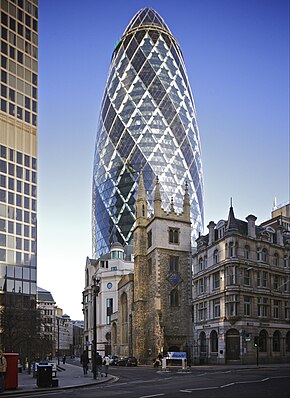


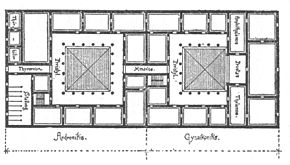






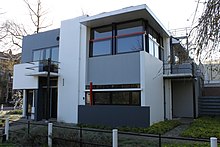

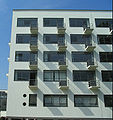





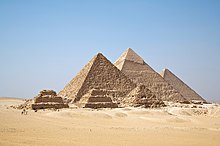


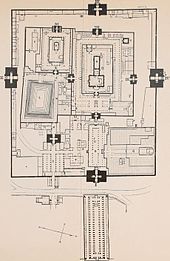
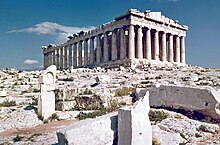


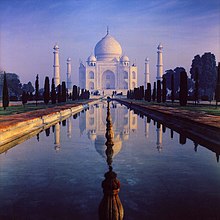



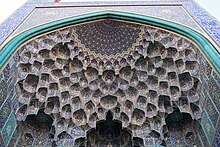

No comments:
Post a Comment